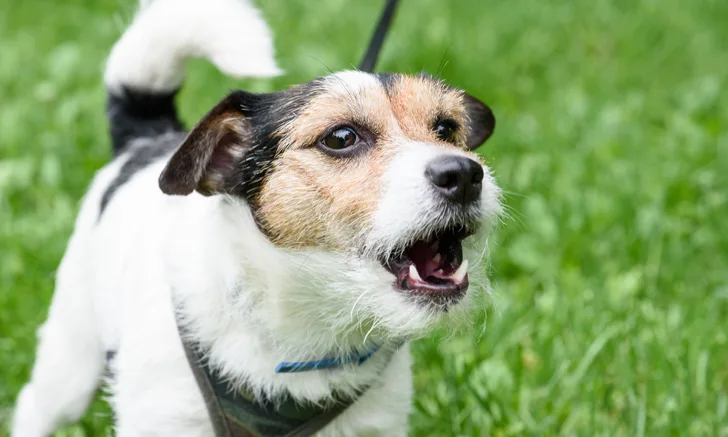Effectiveness of Canine Aggression Treatment Protocols
Bonnie V. Beaver, DVM, MS, DSc (Hon), DPNAP, DACVB, DACAW, Texas A&M University

In the Literature
Dinwoodie IR, Zottola V, Dodman NH. An investigation into the effectiveness of various professionals and behavior modification programs, with or without medication, for the treatment of canine aggression. J Vet Behav. 2021;43:46-53.
The Research …
Canine aggression studies with large sample sizes are important because aggression, including biting, can be hard to quantify and may reflect breed-related issues.1,2
This study investigated the success of different specialists, techniques, equipment, and medications to manage aggression in dogs. Although defining aggression types in a study can be problematic, the authors used an intragroup approach that accounted for differences in terminology and resulted in 5 broad categories: conflict aggression (ie, aggression toward familiar humans [formerly called dominance aggression]), interdog housemate aggression, fear aggression toward humans, fear aggression toward other dogs, and predatory aggression.
Self-reported data were collected from owners of 963 aggressive dogs. A majority of owners (81 percent) who sought help from a board-certified behaviorist found the advice helpful for treating their dog’s aggression. Training equipment (eg, antibark collars, muzzles) decreased the probability for successful aggression treatment. Behavior modification training techniques (eg, response blocking) decreased the probability for improvement in fear aggression toward other dogs and predatory aggression. The most consistently beneficial behavior modification techniques included improved dog–owner communication, habituation, relaxation protocols, and short, frequent training sessions. Traditionally prescribed medications (eg, fluoxetine, trazodone) were not helpful, but this may be because owners were not referred early enough to a specialist.
Dogs with fear and anxiety comorbidities were more difficult to treat. In addition, changes in management negatively impacted aggression between familiar dogs, possibly because management changes typically consisted of using time-out, which delays establishment of a stable hierarchy among canine housemates. In contrast, management changes to treat predatory aggression (ie, preventing access to animals that are likely to trigger chasing) are particularly important.
A clinician was consulted for aggression in 213 (22%) dogs. Of those, 15% were diagnosed with a contributing medical condition, raising suspicion that some dogs not seen by a clinician may have had an undiagnosed contributing medical condition. It is important to ask pet owners about possible behavior problems during routine examinations.
… The Takeaways
Key pearls to put into practice:
During routine examinations, it is important to ask dog owners whether the dog is developing unwanted behaviors (eg, aggression), which can be easier to stop when caught early.
Behavior modification in the form of desensitization and counterconditioning can be useful for managing aggressive dogs.
Short behavior modification and training sessions are more successful than longer sessions.
You are reading 2-Minute Takeaways, a research summary resource presented by Clinician’s Brief. Clinician’s Brief does not conduct primary research.